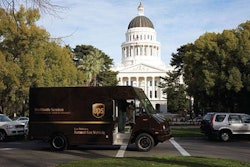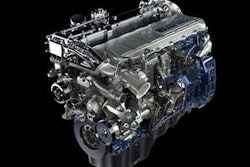CVOC sessions highlight future equipment trends
By Jeff Crissey
The trucking industry has seen more changes in the last 10 years than in all the other years of trucking combined,” Mike Bromhall, FFE Transportation’s vice president of fleet maintenance and facilities, told fleet and supplier attendees at last month’s Commercial Vehicle Outlook Conference in Dallas.
He’s dead-on, and the costs associated with regulations, diesel price volatility, used truck values, driver retention and changes in freight movement certainly are affecting the way fleets purchase new equipment. But going forward, it will be more important than ever for fleet managers to spec equipment not only to meet today’s challenges – but tomorrow’s as well.
During the panel discussion on equipment trends, Derek Kaufman, president of C3 Network, said another factor that will affect equipment spec’ing is manufacturers shifting strategies to locate centers closer to their customers. “The possible impacts of this trend on trucking are shorter haul lengths, decreased fuel efficiency and increases in day cab demand,” Kaufman said.
Tom Kretsinger Jr., president and COO of American Central Transport, shares the way his company looks at future equipment purchases in three key areas:
• Price: Spec-to-spec comparisons, financing costs, warranties and disposal of used equipment
• Resale: Spec’ing with an eye on the residual market, determining fair market values by component (premium interior vs. base, 10-speed manual transmission vs. 13-speed automatic, etc.)
• Cost to operate: Fuel burned over the equipment’s lifecycle, downtime and warranty coverage
Future equipment purchases will require careful consideration, said Tom Kretsinger Jr., president and chief operating officer of American Central Transport, during the panel discussion. Most important, Kretsinger said, is testing new equipment to make sure it will meet your needs for the truck’s entire lifecycle. “I don’t want to go buy 200 new trucks and find out there’s a big problem,” he said. “Future purchases require linear thinking and looking ahead. About the time you determine a piece of equipment is right for you, there’s a new regulation handed down.”
Consider the upcoming 2014 greenhouse gas emissions regulations designed to cut carbon dioxide by 3 percent in 2014 and up to 9 percent by 2017. Cummins and Detroit already have announced that engines meeting 2014 standards will be available early next year. While there certainly will be an increase in engine costs associated with meeting the regulations, fleets should be able to recover the upfront costs quickly. Lori Thompson, Cummins’ vice president for truck and bus OEM business, said in her remarks to CVOC attendees that improving fuel economy by 6 percent saves 1,132 gallons of diesel fuel, cuts 11.45 tons of carbon dioxide and can save a fleet $4,528 per truck per year.
Speculation about the future role of natural gas engines also was a common thread among all presentations at this year’s CVOC, echoing the recent groundswell in carriers’ interests in new engine offerings and a growing natural gas supply infrastructure.
Bob Carrick, Freightliner’s vocational sales manager for natural gas, said during the LNG/CNG panel discussion that the company’s natural gas build rate could be as high as 20 percent by 2020 across all platforms. “We are at the point now where if fleets can buy fuel at the right price, we – and our colleagues and competitors – can build a natural gas truck for you.”
Dan England, chairman of C.R. England, offered mixed results of his company’s LNG test program. “We’re not real high on what’s happening right now,” he admitted, noting that the company’s early experience would require the price of diesel to be $4.80 per gallon. But he added, “We’re looking forward to getting the Cummins 12-liter natural gas engine next year, which will be much more suitable for our application.”
With additional trends including fast adoption rates of electronic onboard recorders, telematics and even auxiliary power units (see page 72), trucks no longer are just engines and cast iron. In the trucking industry’s ever-changing 
JEFF CRISSEY is Editor of Commercial Carrier Journal. E-mail [email protected].











